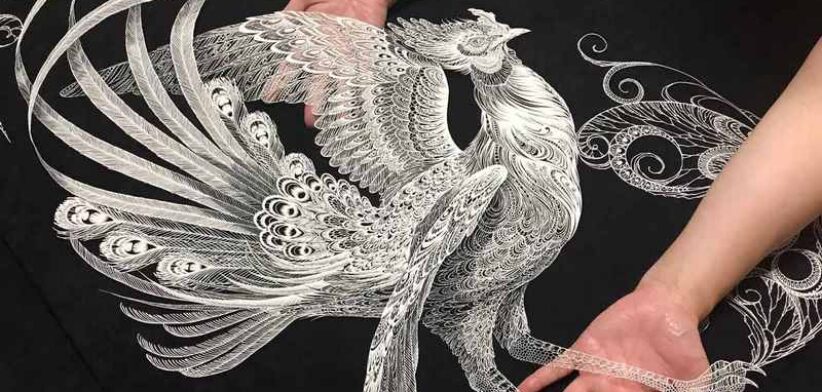An ancient Japanese form of paper art could hold the key to the future reliability of our wireless networks.
Researchers in North America believe kirigami, the ancient Japanese art of cutting and folding paper to create intricate three-dimensional designs, could provide a model for manufacturing the next generation of antennas.
Drexel University Professor Yury Gogotsi said the future of wireless technology, from charging devices to boosting communication signals, relied on the antennas that transmitted electromagnetic waves becoming increasingly versatile, durable and easy to manufacture.
Professor Gogotsi said their research showed how kirigami, a variation of origami which allowed paper to be cut and pasted, not just folded, could be harnessed for the new technology.
He said using the art process they transformed a single sheet of acetate coated with conductive MXene ink into a flexible 3D microwave antenna whose transmission frequency could be adjusted by pulling or squeezing to slightly shift its shape.
“The proof of concept is significant because it represents a new way to quickly and cost-effectively manufacture an antenna by simply coating aqueous MXene ink onto a clear elastic polymer substrate material.
“For wireless technology to support advancements in fields like soft robotics and aerospace, antennas need to be designed for tunable performance and with ease of fabrication.”
He said kirigami was a natural model for a manufacturing process, due to the simplicity with which complex 3D forms could be created from a single 2D piece of material.
Professor Gogotsi said standard microwave antennas could be reconfigured either electronically or by altering their physical shape.
“However, adding the necessary circuitry to control an antenna electronically can increase its complexity, making the antenna bulkier, more vulnerable to malfunction and more expensive to manufacture.
“By contrast, the process demonstrated in this work leverages physical shape change and can create antennas in a variety of intricate shapes and forms.
“These antennas are flexible, lightweight and durable, which are crucial factors for their survivability on movable robotics and aerospace components.”
Read the full study: MXene-based kirigami designs: showcasing reconfigurable frequency selectivity in microwave regime.








